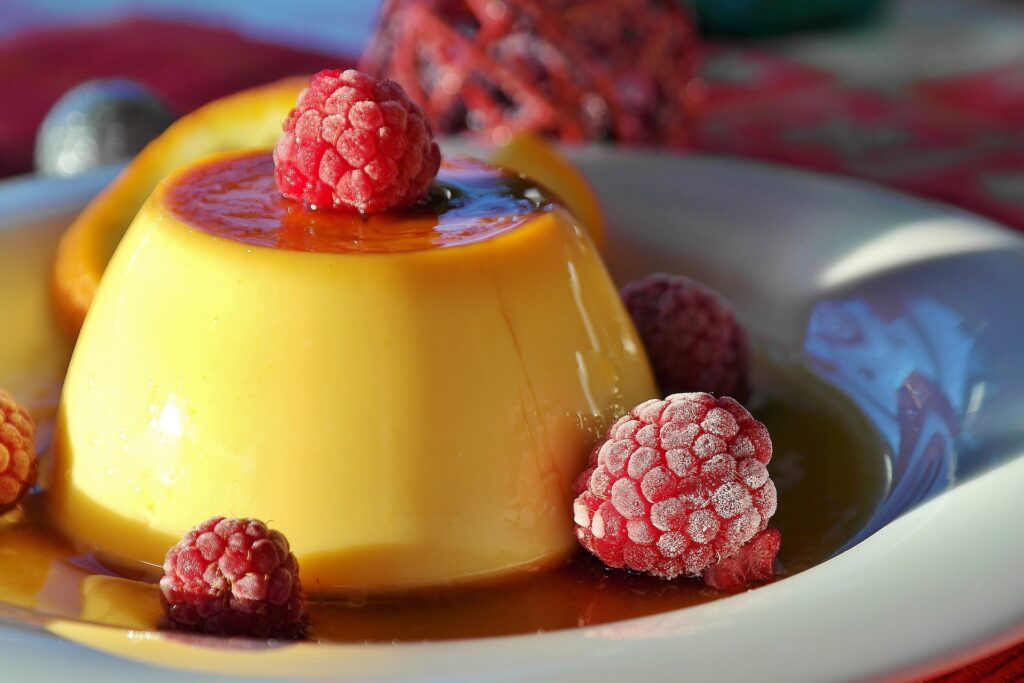
Caramel Chemistry: The Maillard Reaction and Beyond
Caramel is one of the richest, most satisfying flavors out there. There are endless variations and many ways to serve it – from silky smooth to crispy hard. Some of our favorite treats of all time are made using variations of caramel: candy apples, crème brûlée, toffee, flan, and even peanut caramel brittle. It’s amazingly […]
Read MoreCaramel is one of the richest, most satisfying flavors out there. There are endless variations and many ways to serve it – from silky smooth to crispy hard. Some of our favorite treats of all time are made using variations of caramel: candy apples, crème brûlée, toffee, flan, and even peanut caramel brittle. It’s amazingly versatile in both taste and texture. If that isn’t enough to entice you, just pause and think about the fantastic chemistry of caramel.
The subtle nuances in caramel flavors are thanks to the chemical reactions as the temperature rises during cooking. Caramelization and the bonding of sugar molecules (similar to the Maillard Reaction) play a role in final formation, color, and aroma. Here’s a step-by-step journey behind the sweet chemistry of caramel!
Sweet Sweet Sugar
Any great caramel recipe begins with the basics – sugar, of course! Granulated white sugar is commonly used to make caramel, and it’s a great place to start. If you’ve never attempted a caramel sauce before, it’s likely best to master the basics of using granulated sugar before branching out.
If you have previous culinary experience, perhaps you’re ready for a challenge. Did you know that each type of sugar will produce its magical caramel chemistry? Here are some other types of sugar you can use to make variations of delightful caramel good enough to eat!
- Brown sugar will add a hint of dark molasses flavor
- Coconut sugar brings out subtle tropical flavors
- Honey creates a softer, creamier style
- Maple syrup can be used for a seasonal twist
- Demerara or raw sugar will produce a crunchy, textured caramel
Each of these sugars will still undergo the primary chemical reaction and the Maillard Reaction at some point to produce that fantastic taste!
Bring On the Heat!
Caramel chemistry is a delicate art, and creating the perfect sauce or filling for baking involves timing, correct temperature, and good culinary equipment. As you prepare your workspace, choose a saucepan with a heavy bottom that can handle the heat. Step one is heating the sugar.
- Place your cup of sugar with about a quarter cup of water in the saucepan and heat it in a medium setting.
- Once you see the sugar begin to dissolve into the water evenly, stir gently and let it come to a boil
- Continue cooking until the mixture reaches a lovely golden brown color – at this stage, continue swirling the saucepan to avoid burning or sticking to the bottom.
Once the color of your sugar changes, beware! Caramel chemistry reactions happen quickly, and overcooking can occur in seconds.
The Maillard Reaction
If you have a background in chemistry or cuisine, you’ve likely heard of the Maillard Reaction. In short, it describes a chemical reaction between amino acids and is responsible for the browning of your food when you cook it. It’s the reason for the crustiness of your pie crust, the crispiness of your steak, and the crunch of your breaded chicken.
When it comes to making caramel, a similar process is responsible for the browning of sugar. It’s called caramelization. Like the Maillard Reaction, caramelization is just part of the caramel chemistry puzzle. Let’s take a deeper look into the chemical process of caramelization and how it occurs.
Caramelization
Caramelization happens when the sugar molecules in a solution break apart and recombine. This process occurs when the heat in the saucepan reaches approximately 160-182 degrees Celsius (or 320-360 degrees Fahrenheit). To achieve the perfect caramelization, it’s a matter of science:
- Avoid setting your heat too high – medium heat is ideal.
- Watch the color of your caramel constantly – once you see a glimpse of your desired color, remove the caramel from the heat source as soon as possible.
- Pay attention to the aroma, which should be sweet and nutty – not burnt!
Caramel chemistry is a delicate balancing act. Even a few seconds more of direct heat can make a big difference. Like the Maillard Reaction, there’s a fine line between perfection and burnt-to-a-crisp.
Cream and Butter Please!
The final touch in creating the perfect caramel is finding the ideal balance of sweet and smooth. As caramelization occurs, you’ll want to add the butter or cream desired to obtain the best texture for your caramel dish. For this stage, less is more. You’ll want to slowly add these final ingredients and keep your concoction in constant motion. Remember, you can always add more, but it’s hard to remove – it’s a matter of science!
The Final Touch
The last addition to your caramel chemistry creation is the finishing touch. When the right caramel texture has been achieved, you can experiment by adding vanilla extract, a bit of salt, a hint of orange zest, or a dash of cardamom to finish it off. Do a taste test and enjoy the moment – making a flawless caramel sauce is no easy feat!
Finally, celebrate the final product by drizzling, dipping, or savoring it with all your senses. Bon appetit!



